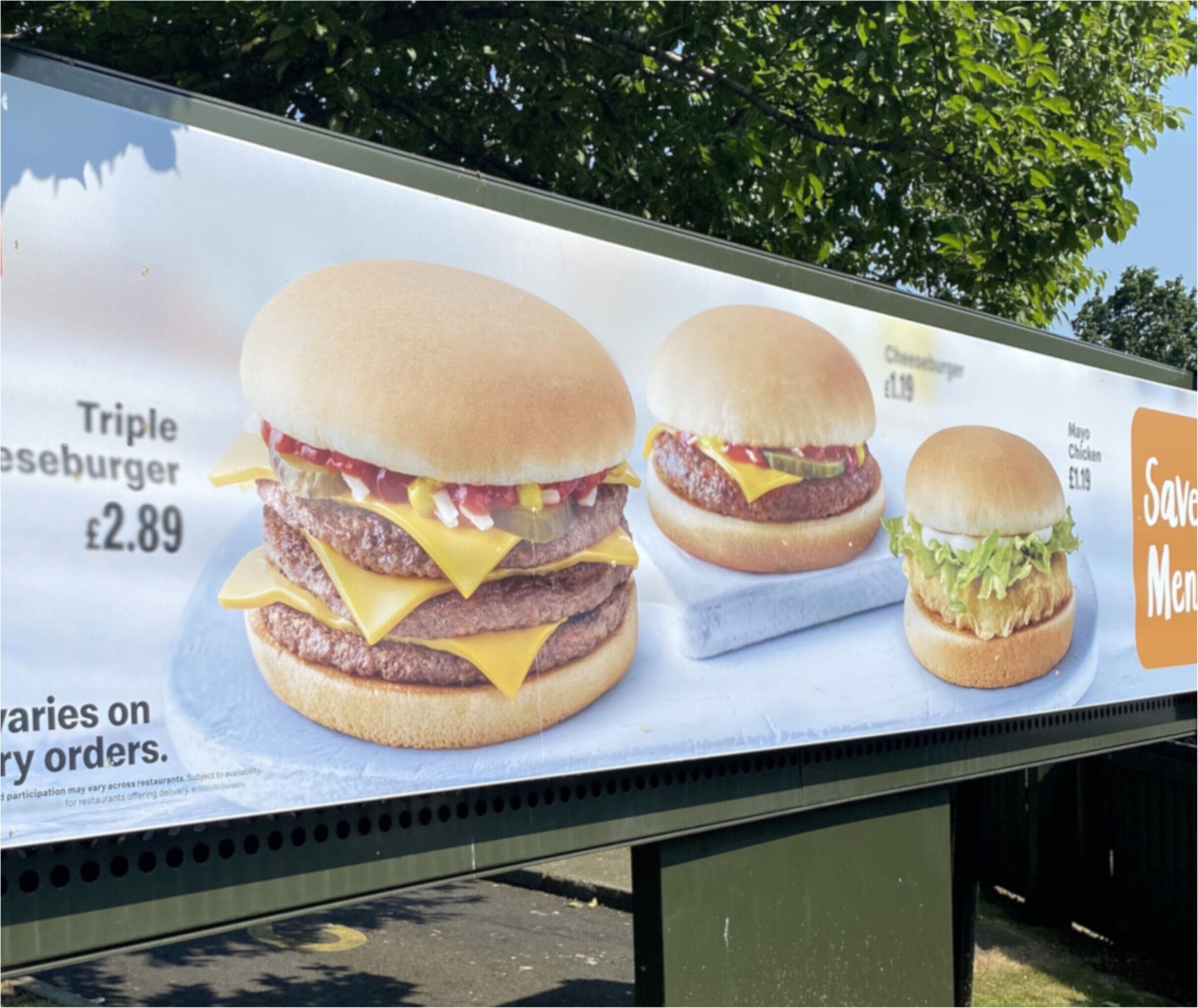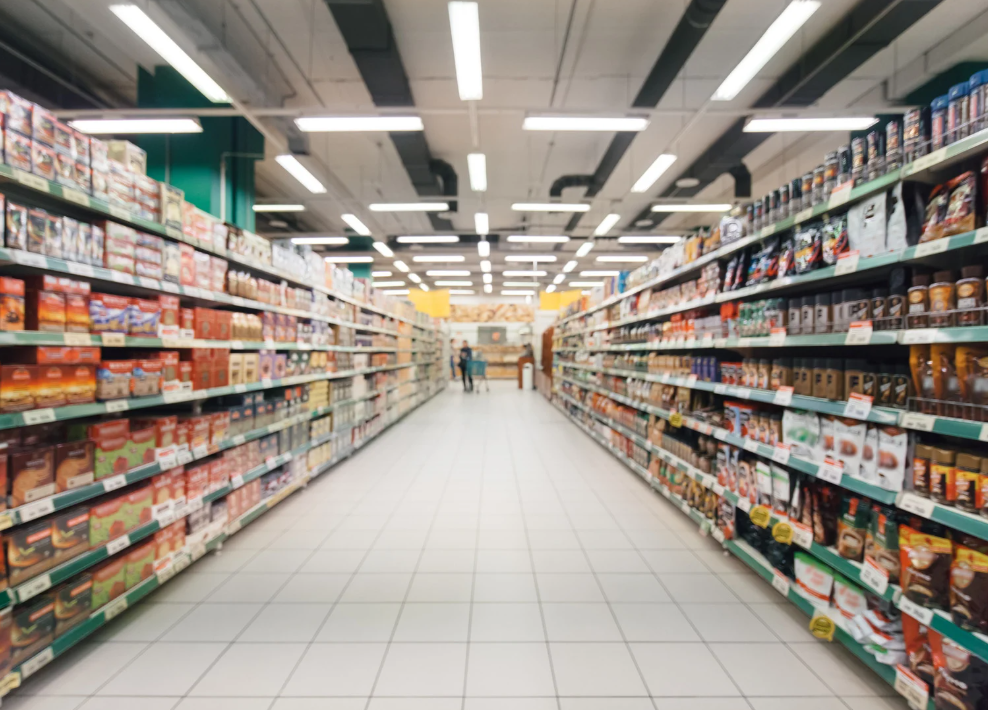Advertising works
Advertising works. Why else would companies spend big money on it? So, it’s no surprise that the more adverts you see for unhealthy foods and drinks, the more likely you are to crave, buy, eat, and prefer those products – just one of the many factors in the UK’s obesogenic food environment which contributes to the overweight and obesity crisis affecting people from all ages and backgrounds.
Policy action
The UK Government has recently ramped up action on advertising and marketing for foods and drinks high in saturated fat, sugar and salt (HFSS). New rules from October 2025 ban volume price promotions for some HFSS products in England, extending product placement restrictions introduced in 2022.
And further action is coming. From January 2026, a 9pm TV watershed and a ban on paid-for online advertising will strengthen existing restrictions on junk food on children’s TV programming, with some of these restrictions set to extend to Scotland and Wales soon too.
Recent analysis from the University of Leeds suggests that policy measures to restrict HFSS promotions do work. In the year following the product placement regulations, sales of in-scope HFSS products reduced in the region of 2 million fewer items sold each day across England.
But up till now, outdoor food advertising has largely been forgotten. With no national policy regulating what can be displayed on billboards, bus stops, roundabouts and alike, there is concern that companies will seek to offset the effects of new HFSS restrictions by increasing their use of outdoor advertising spaces.
Outdoor advertising is hard to avoid
Most people are exposed to some form of outdoor advertising as they go about their daily lives, and worryingly the adverts around us can even have a subconscious influence on our food-based decisions.
With different stakeholders having ownership of outdoor advertising spaces, including local authorities (e.g. signs on roundabouts and in parks), transport authorities (including Transport for London) and private companies (in the case of billboards and hoardings), it’s hard to keep tabs on where the advertising spaces are, how many exist, and what is being advertised on them. This means the scale of the problem around junk food advertising exposure in outdoor settings is largely unknown, and increases in advertising could go unnoticed and unchecked.
Local action
Spearheaded by the first-of-its-kind ban on HFSS adverts across the Transport for London network in 2019, a growing number of UK local authorities have now introduced Healthier Food Advertising Policies (HFAPs), but more local action is needed.
Data is key to understanding the scale of the problem, to measure how effective policies are, and to highlight who in the population is most at risk. Without evidence in these areas, HFAPs are difficult to advocate for in a challenging political landscape.
Mapping Advertising Assets Project in Leeds
The MAAP study sought to understand the scale and distribution of outdoor food and drink advertising in Leeds, a city which doesn’t currently have a HFAP in place.
Without an open access centralised database of advertising locations, types and products, our research team at the University of Leeds went out on foot to 30 Leeds neighbourhoods. Armed with our phone cameras, we snapped photographs of all the outdoor advertising we saw then brought them back to our desks to code up using the Nutrient Profile Model Calculator.
An interactive map can be used to explore the data collected during the project, and the data is available from the HASP Data Catalogue.
Our findings revealed that outdoor advertising in Leeds is not evenly distributed. Areas within the most deprived 20% of the city had higher levels of advertising, and food and drink advertising was most prevalent in neighbourhoods in the most deprived 40%. What is more, bus shelter advertising dominated the Leeds food advertising landscape and were more likely to display HFSS product adverts.

The data gap
Without data to keep the outdoor advertising landscape in check, there’s a real risk of a ‘billboard boom’, where advertisers offset lost advertising opportunities by exploiting the outdoor advertising policy gap.
But where would this data come from? With many different owners of outdoor advertising assets (including public and private), no centralised database exists. What does sits behind paywalls to be accessed and exploited by advertisers only, limiting researchers to manual fieldwork approaches.
In the future, the ubiquitous role of image capture in modern society, such as CCTV and dashcam footage, and geotagged smartphone images on social media, could offer potential smart data solutions to outdoor advertising surveillance. However, challenges around data ethics, handling huge data volumes and automated image recognition classifiers would be critical to overcome.
An interim next step could be to explore the role of citizen science in the data capture and coding steps, which could have the added benefit of canvassing public opinion and empowering community activists to hold governments and companies accountable for the advertising exposures around us.
Explore advertising assets in Leeds
Over 5 weeks in May and June 2023, Vicki’s team visited 30 neighbourhoods (LSOAs) in Leeds and photographed all the outdoor advertising assets that they found.
You can explore the advert counts, locations and neighbourhood-level characteristics of the 30 LSOAs they visited on our MAAP dashboard. You can also download the underlying data via the HASP data catalogue.
Map advertising assets in your area
If you’re interested in replicating the study in your area you can find further detail on the area sampling strategy and data collection methods used in the full paper in Public Health Nutrition. Contact our Impact and Engagement Manager, Lizzy McHugh, to discuss how HASP can support with data hosting.








